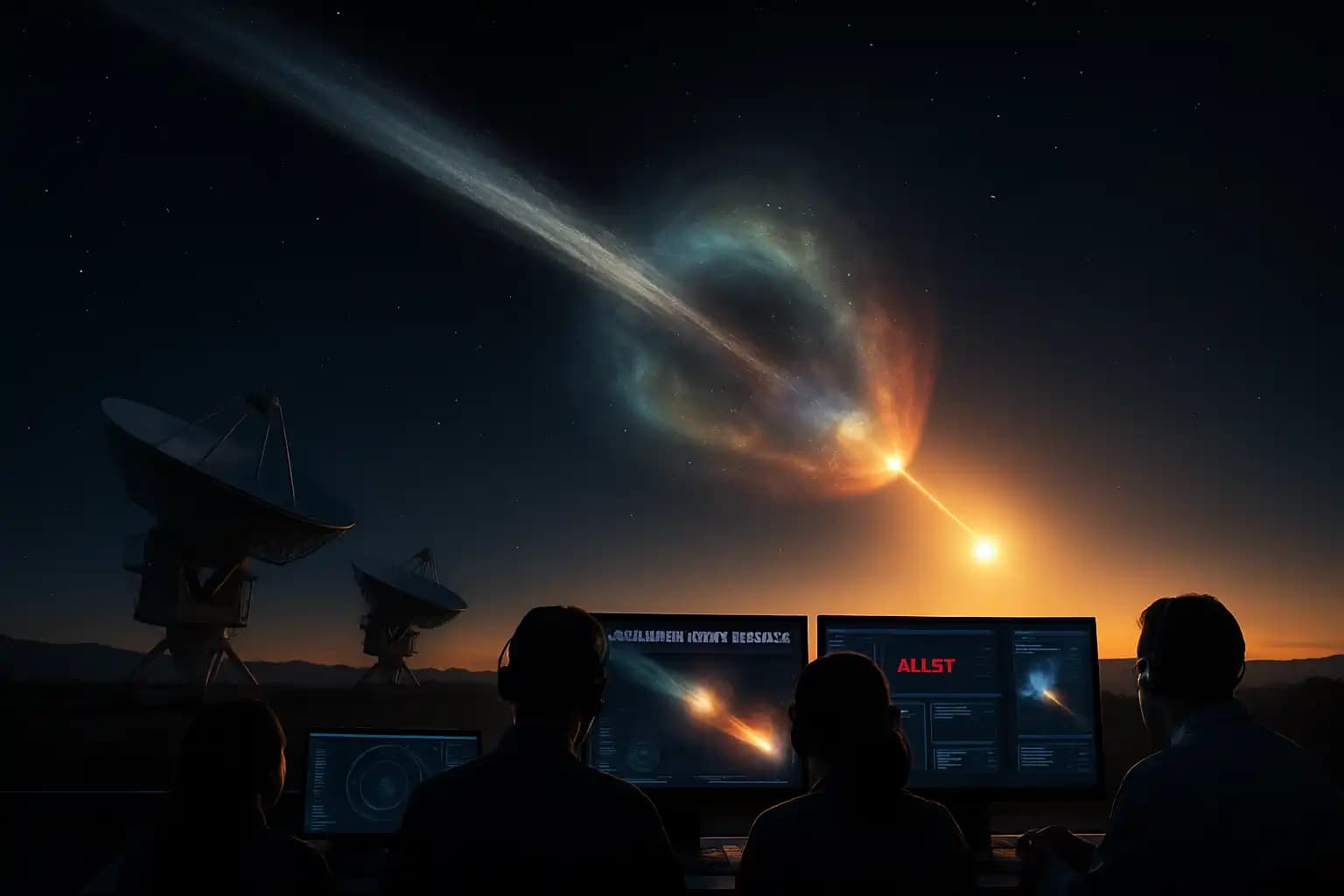Interstellar comet 3I/ATLAS defies expectations as it races through the solar system in October 2025. Discovered by the ATLAS survey telescope in Chile, this cosmic traveler exhibits a wild, hyperbolic trajectory. Most recently, after its closest solar approach, observers at the Keck II telescope confirmed a dramatic outburst, ejecting a plume of dust and forming a rare “anti-tail”—jets of material aimed toward the Sun. These findings, backed by canonical orbital records and direct observations, challenge long-standing models of cometary activity and prompted swift action from planetary defense agencies.
Trajectory Mystery: Why 3I/ATLAS Refuses to Behave
Unlike typical solar system comets, 3I/ATLAS races at an astonishing 210,000 km/h, its path unbound by the Sun’s gravity. However, a mid-October outburst left astronomers confused as NASA and global teams watched it develop a reverse tail near Mars. Orbit modeling from sources like Star Walk emphasizes its unpredictability, noting it won’t come closer than 1.8 AU to Earth while showcasing a dynamic “anti-tail” during its closest approach. This critical passage forced an unprecedented recalibration of its trajectory and ignited renewed debates about possible fragmentation. Notably, the early investigations into its risk profile remain vital for ongoing planetary defense strategies.
Similar to other astronomical surprises—like geomagnetic disruptions (covered in this reality check)—this orbit positions 3I/ATLAS as a laboratory for limits in astronomical prediction rather than causing direct planetary panic.
Error Code: Bizarre Chemistry and Artificiality Debates
If the orbit astounds, the chemistry breeds controversy. According to an in-depth feature from UROUBC, spectrographic analysis in October revealed outgassed material rich in atomic nickel yet oddly lacking iron—a combination never before observed naturally. Even more perplexingly, the nickel appears chiefly in nickel tetracarbonyl (Ni(CO)4), a compound produced through human industrial processes. Some researchers, including Harvard’s Avi Loeb, argue this anomaly could indicate non-natural origins. Others suggest it reflects rare formation conditions in 3I/ATLAS’s home system. The debate continues, especially with prominent voices invoking comparisons to “Trojan horse” scenarios and manufactured alloys.
Anomalous spectra evoke historical cases of scientific dissent and whistleblower revelations (as cataloged in this media censorship firestorm), where established views clash with open inquiry under public scrutiny.
Global Response: Emergency Monitoring Goes Live
3I/ATLAS’s rapid changes and unusual tail triggered alarms in public policy: the United Nations, alongside the International Asteroid Warning Network (IAWN), initiated a planetary defense campaign. As reported by the International Business Times, NASA and planetary defense partners initiated a months-long global observation drill coinciding with 3I/ATLAS’s perihelion. This marks the first coordinated early-warning response involving amateur astronomers, academic networks, and national emergency agencies for an interstellar object. The goal? To refine astrometric tracking and detection protocols, ensuring rapid global notification if a comet or asteroid poses a genuine threat. This groundbreaking campaign runs from November through January, echoing structured emergency drills previously reserved for earthbound disasters.
While speculation continues—much like the supposed “man-made” chemistry—official agencies stress that there is no danger to Earth. Nonetheless, the 3I/ATLAS situation has expedited emerging planetary defense standards and protocols, paralleling previous exercises in response to potential impact threats (archived here).
What It Means: The 3I/ATLAS Case as a Future Template
3I/ATLAS isn’t merely a cosmic anomaly but a call to action for a new era of planetary preparedness. Its strange tail, Manhattan-size nucleus, and nickel-rich vapor cloud already shape debates on natural versus engineered origins, emergency response, and the need for transparency in major scientific discoveries. Interstellar visitors, like this one and past megastructures seen in other headline-grabbing moments (see this exploration of phenomenon and expectation), become landmarks for science, risk communication, and today’s rumor cycle.
In this evolving landscape, what began as astronomical conjecture transforms into a testbed for global defense, open data, and epistemic humility. Ongoing analysis by Unexplained.co will explore how the saga of 3I/ATLAS may influence our cosmic vigilance and future science policy—regardless of how peculiar the universe becomes.




